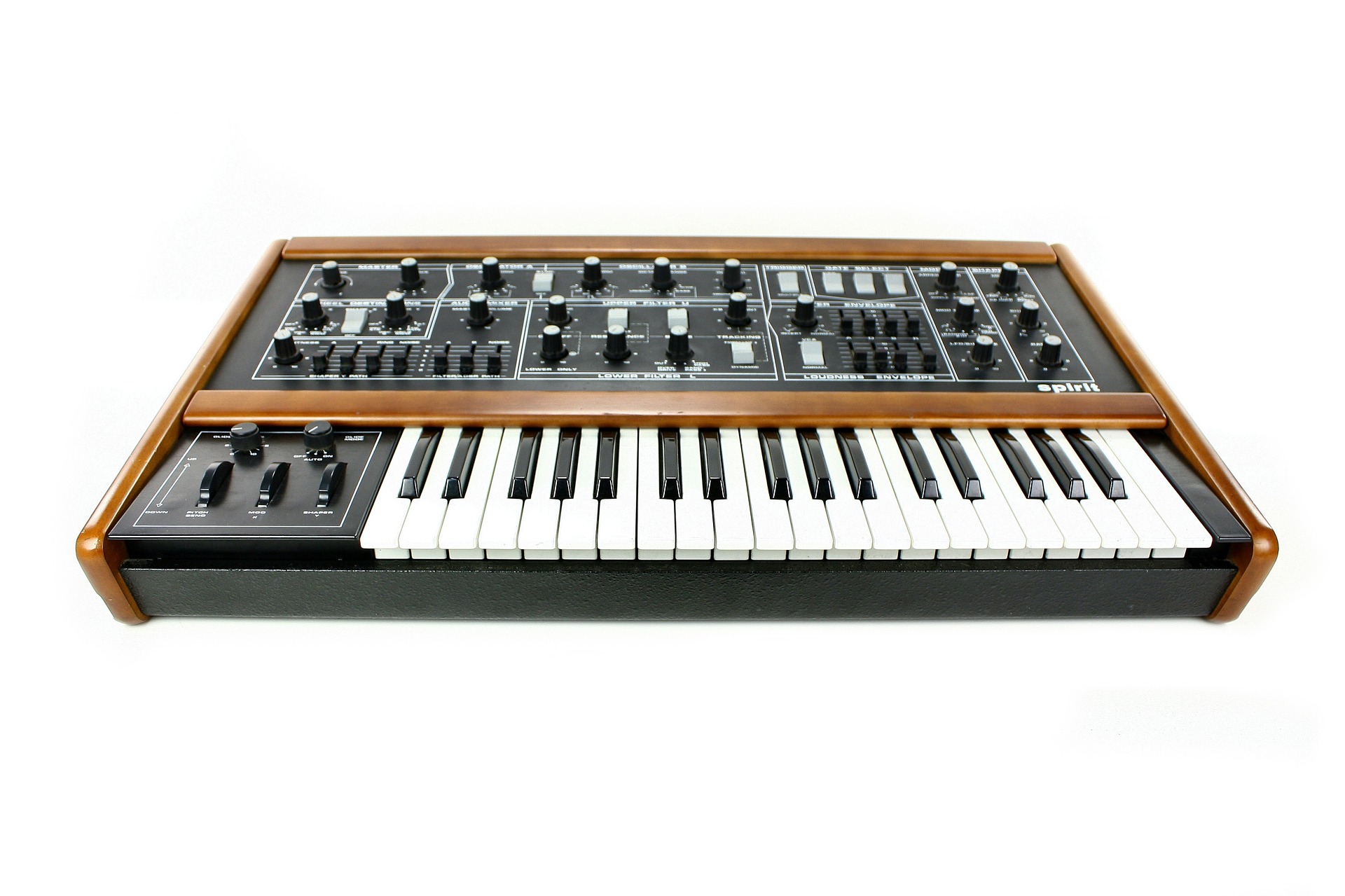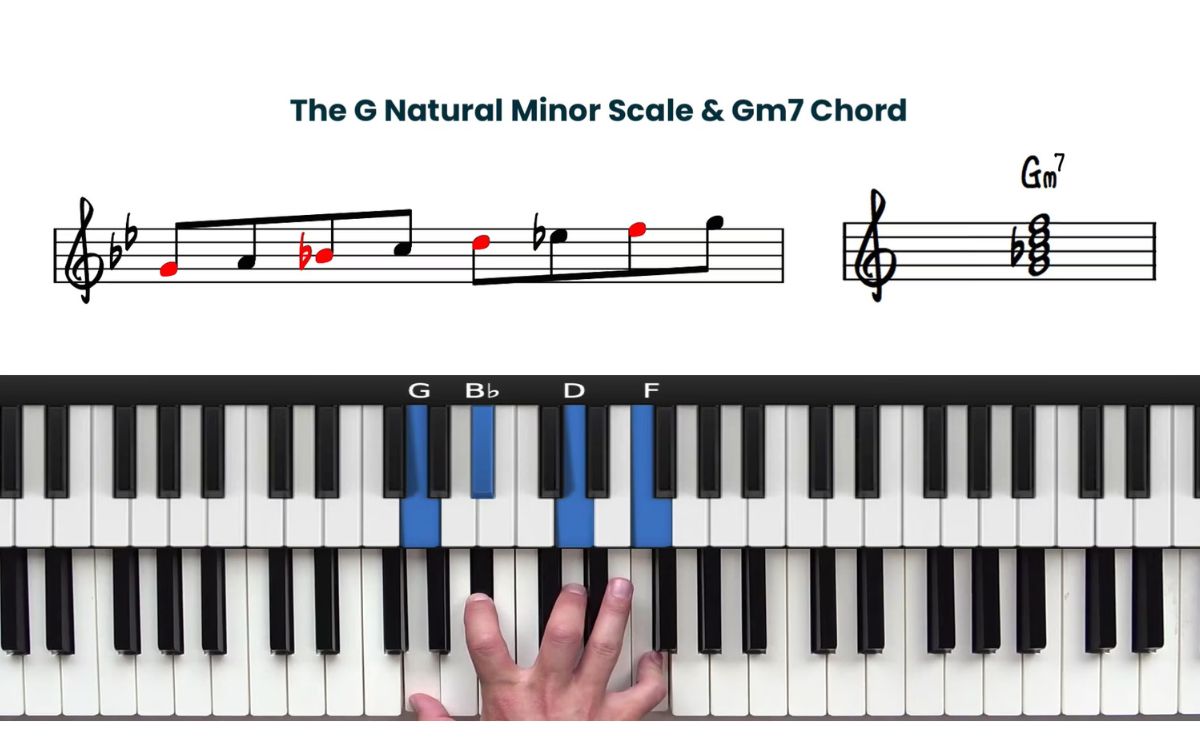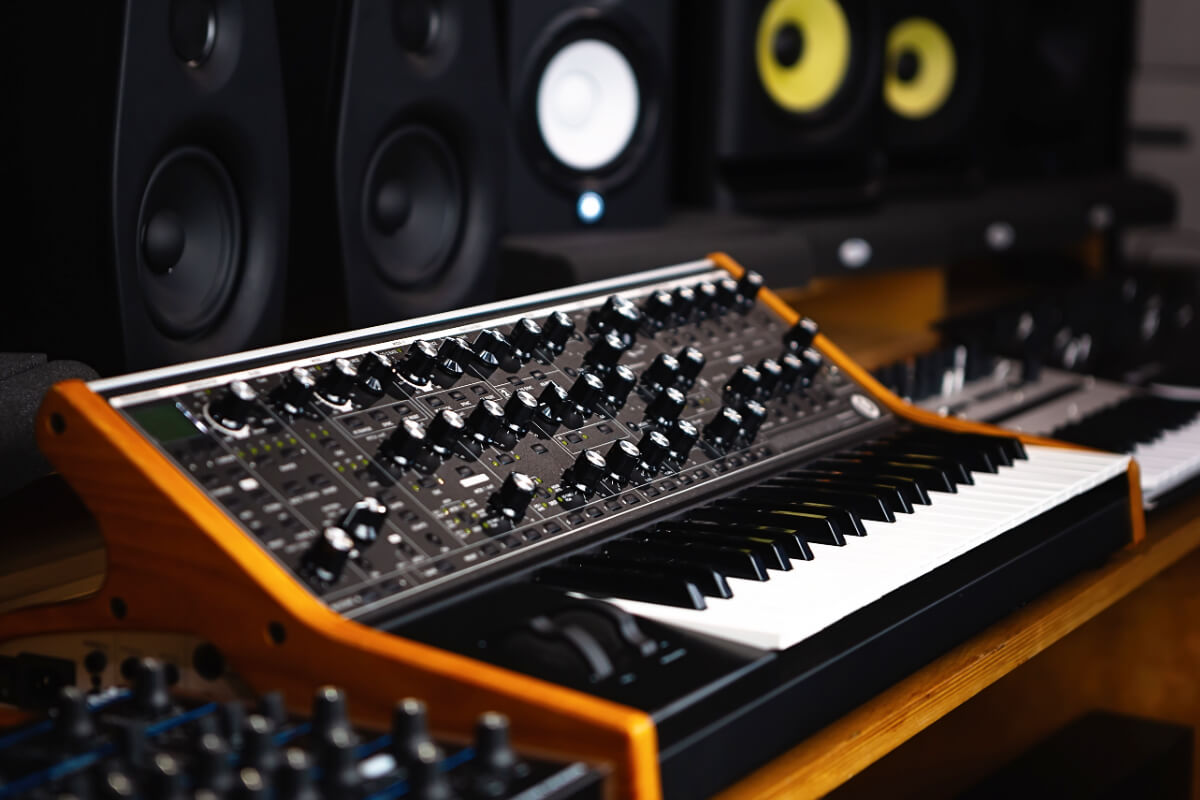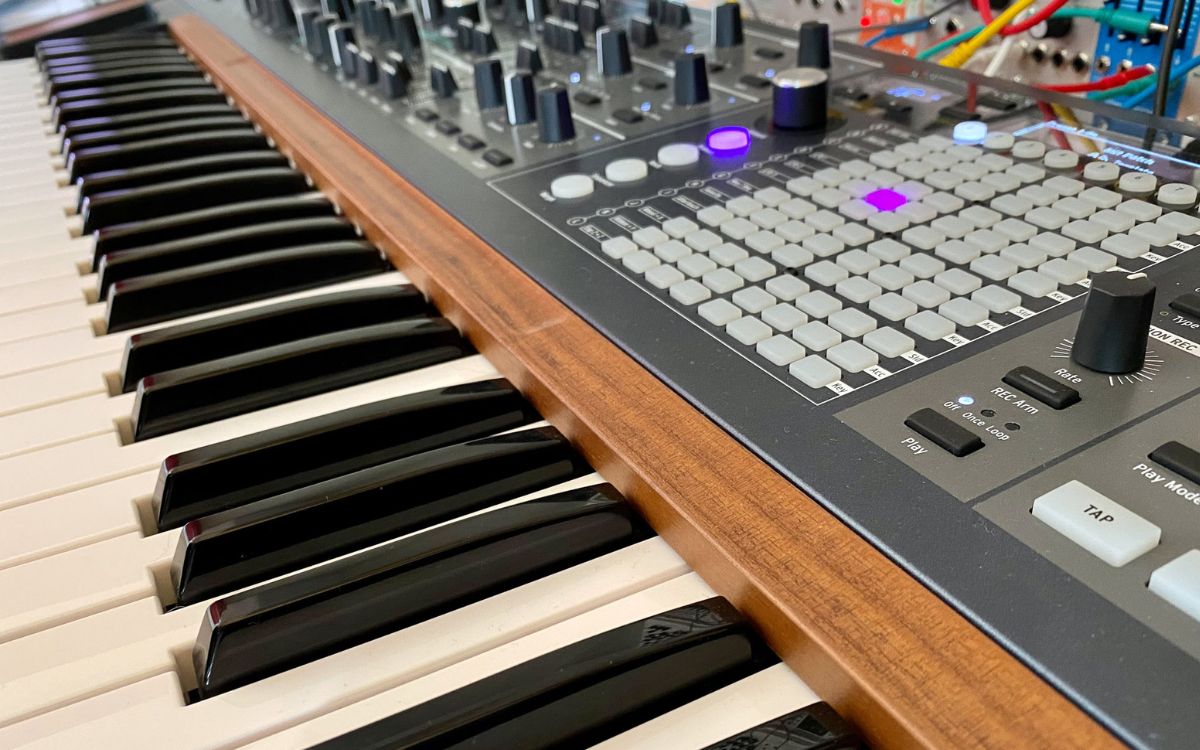Home>Instruments>Synthesizer>What Is A Soft Synthesizer
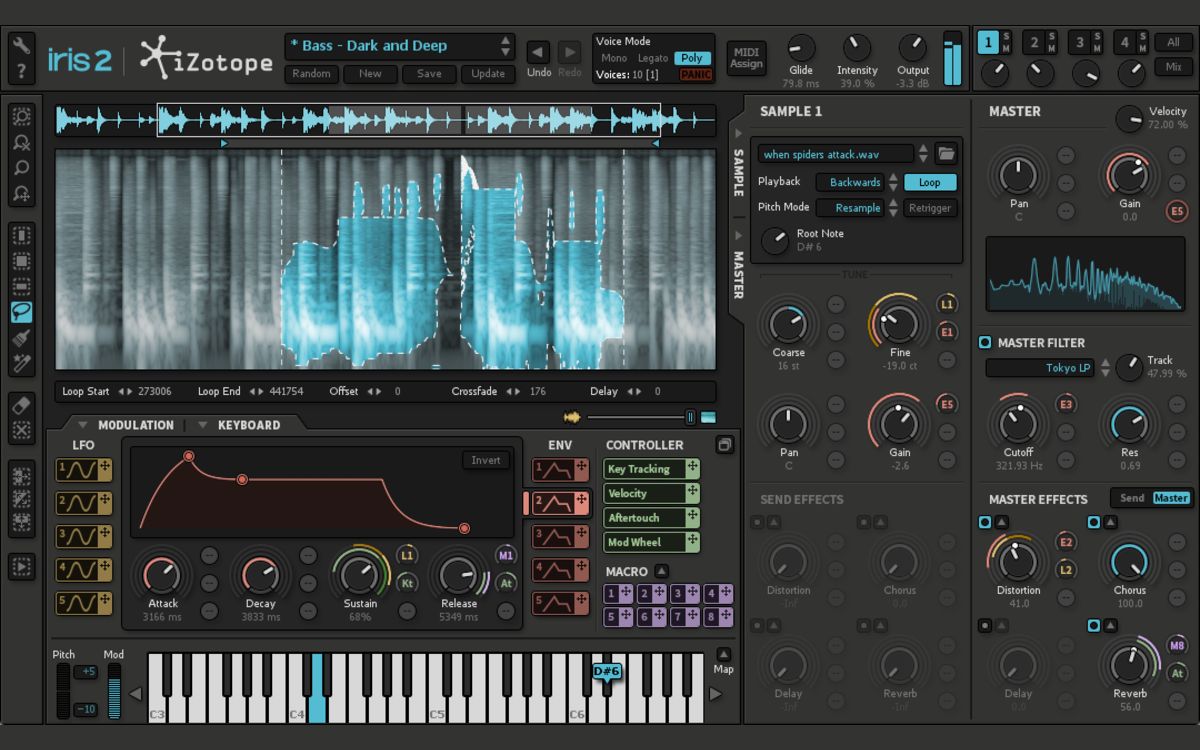

Synthesizer
What Is A Soft Synthesizer
Modified: January 22, 2024
Discover the world of soft synthesizers and learn what a synthesizer is, its functions, and how it can enhance your music production. Explore various types and find the perfect synthesizer for your creative needs.
(Many of the links in this article redirect to a specific reviewed product. Your purchase of these products through affiliate links helps to generate commission for AudioLover.com, at no extra cost. Learn more)
Table of Contents
Introduction
Welcome to the world of synthesizers, where technology and creativity intertwine to produce mesmerizing sounds and music. In the realm of electronic music production, one tool that stands out is the soft synthesizer. But what exactly is a soft synthesizer and how does it work?
A soft synthesizer, also known as a virtual synthesizer or software synthesizer, is a computer software program that emulates the functionality and features of a hardware synthesizer. It allows musicians, producers, and sound designers to create and manipulate a wide range of sounds using their computer or digital audio workstation (DAW).
Unlike hardware synthesizers, which are physical instruments with dedicated circuits and components, a soft synthesizer is purely digital. It operates within the software environment of a computer, utilizing the processing power and capabilities of the CPU to generate and modulate sound waves.
Soft synthesizers are incredibly versatile and offer a plethora of options for sound creation. They can emulate classic analog synthesizers, recreate natural instruments like pianos and strings, or even generate abstract and experimental sounds. The possibilities are virtually limitless.
Furthermore, soft synthesizers often come with a user-friendly interface that allows musicians to tweak and customize various sound parameters. This flexibility enables users to sculpt and shape their sounds according to their creative vision, making soft synthesizers a powerful tool in the hands of producers and musicians.
Soft synthesizers have become increasingly popular in recent years, thanks to advancements in technology and the accessibility of music production software. They have revolutionized the way music is made, allowing artists to create professional-grade music from the comfort of their own homes or studios.
In the following sections, we will delve deeper into the inner workings of soft synthesizers, explore their different types, and highlight some key features and advantages of using them in music production.
Definition of a Soft Synthesizer
A soft synthesizer, also referred to as a virtual synthesizer or software synthesizer, is a computer program that simulates the functionality and capabilities of a hardware synthesizer. It is designed to generate, manipulate, and modulate sound waves, allowing users to create a wide range of sounds and textures for music production.
Unlike hardware synthesizers, which consist of physical components and circuitry, soft synthesizers exist solely within the digital realm. They are implemented as software plugins or standalone applications that run on a computer or digital audio workstation (DAW).
Soft synthesizers use algorithms and mathematical models to generate and manipulate sound waves in a variety of ways. They can mimic the behavior of analog synthesizers, replicating the warm, fat, and rich sounds associated with vintage hardware. They can also create realistic emulations of acoustic instruments like pianos, drums, and strings, as well as generate completely unique and otherworldly sounds.
One of the main advantages of using a soft synthesizer is its flexibility and versatility. Unlike hardware synthesizers, which are limited by their physical components, a soft synthesizer can be modified and customized in countless ways. Users can adjust parameters such as oscillator types, filters, envelopes, LFOs (Low-Frequency Oscillators), modulation options, and effects to shape and control the sound to their liking.
Soft synthesizers are often equipped with intuitive user interfaces and graphical representations of parameters, making them accessible even to users with limited technical knowledge. They can be manipulated using a combination of virtual knobs, sliders, buttons, and visual displays, providing a familiar and tactile experience for musicians and producers.
Overall, the use of soft synthesizers has revolutionized the way music is created and produced. With their ability to emulate a wide range of sounds and their flexibility in sound design, soft synthesizers have become an essential tool for musicians, sound designers, and producers in the modern music industry.
How Soft Synthesizers Work
While soft synthesizers may appear complex, their fundamental principles are rooted in the principles of sound synthesis. Understanding how they work can provide a deeper insight into their capabilities and functionalities.
At the heart of a soft synthesizer lies the concept of sound generation. Sound is created by producing and manipulating electrical waveforms, which are then amplified and sent to speakers or headphones to be heard. Soft synthesizers achieve this process digitally, utilizing algorithms and mathematical calculations to generate and shape these waveforms.
The primary component of a soft synthesizer is the oscillator. Oscillators produce waveforms, such as sine waves, square waves, or sawtooth waves, which form the basis of different sounds. These waveforms generate the raw tones that can be further modified to create various sounds. By manipulating parameters like frequency, pitch, and waveform shape, users can create a multitude of sonic textures.
In addition to oscillators, soft synthesizers often include filters to shape and sculpt the generated sound. Filters attenuate or amplify specific frequency ranges, allowing users to remove unwanted frequencies or emphasize desired ones. This gives the sound a more distinct and tailored character.
Another crucial component in a soft synthesizer is the envelope generator. Envelopes control how parameters change over time, shaping the dynamics and texture of the sound. Common envelope types include the Attack, Decay, Sustain, and Release (ADSR) envelope, which dictates how a sound evolves from the moment a key is pressed to the point it fades out.
Low-Frequency Oscillators (LFOs) are also prevalent in soft synthesizers, providing cyclical modulation to various parameters. LFOs can create effects such as vibrato, tremolo, or rhythmic modulation, adding movement and interest to the sound.
Furthermore, soft synthesizers often include modulation options to create more intricate and evolving sounds. Modulation allows users to link different parameters together, so that changes in one parameter affect another. This enables complex and dynamic sound synthesis.
Finally, soft synthesizers may also incorporate effects processors, such as reverb, delay, chorus, and distortion, to further enhance the sound. These effects shape the spatial characteristics, add depth, and introduce unique textures to the synthesized sounds.
Overall, the combination of oscillators, filters, envelopes, LFOs, modulation options, and effects processors provides users with a wide range of tools to shape and manipulate sound within a soft synthesizer. By understanding these components and how they interact, users can harness the full potential of soft synthesizers and unlock their creative possibilities.
Types of Soft Synthesizers
Soft synthesizers come in various types, each with its own characteristics, sound generation methods, and capabilities. Understanding the different types of soft synthesizers can help musicians and producers choose the right tool for their specific needs and musical styles.
-
Subtractive Synthesizers
This type of soft synthesizer is modeled after the classic analog synthesizers of the past. Subtractive synthesizers generate sound by starting with a complex waveform and then using filters to subtract or remove certain frequencies, resulting in a more defined and focused sound. These synthesizers are widely used for creating fat basslines, punchy leads, and rich pads.
-
Additive Synthesizers
Additive synthesizers take a different approach to sound generation. Instead of subtracting frequencies, additive synthesizers combine multiple individual sine wave oscillators to create complex waveforms. Users have precise control over each oscillator’s amplitude and frequency, allowing for the creation of intricate and evolving harmonic content. Additive synthesizers excel in creating lush and evolving textures.
-
FM Synthesizers
FM (Frequency Modulation) synthesizers utilize a technique known as frequency modulation to generate sounds. They modulate one oscillator’s frequency with another oscillator, resulting in complex and evolving timbres. FM synths are renowned for their ability to produce metallic, bell-like tones and unique harmonic richness. They are often used for creating bright and piercing sounds.
-
Granular Synthesizers
Granular synthesizers focus on manipulating tiny grains of sound. They take small fragments of audio, called grains, and manipulate their pitch, duration, and position to create entirely new sounds. Granular synths are prized for their ability to create atmospheric textures, evolving soundscapes, and interesting experimental sounds.
-
Wavetable Synthesizers
Wavetable synthesizers utilize wavetables, which are pre-recorded sets of single-cycle waveforms. Users can morph between these waveforms to create dynamic and evolving sounds. Wavetable synths are capable of producing a wide range of sounds, from lush pads to aggressive leads, making them versatile tools for many genres.
-
Sampling Synthesizers
Sampling synthesizers use recorded audio samples as the basis for sound creation. Users can manipulate and manipulate these samples using various parameters such as pitch, speed, and looping to create unique sounds and patterns. Sampling synths are particularly useful for recreating realistic instrument sounds and incorporating real-world sounds into the music.
These are just a few of the many types of soft synthesizers available in the market. Each type has its own sonic characteristics and unique capabilities, providing musicians and sound designers with a vast array of options to explore and experiment with in their music production endeavors.
Key Features of Soft Synthesizers
Soft synthesizers offer a plethora of features that contribute to their versatility and creative potential. These features empower musicians and producers to shape and manipulate sounds in innovative and unique ways. Let’s explore some of the key features that make soft synthesizers indispensable tools in the music production process.
-
Oscillators
The heart of any synthesizer, oscillators generate the basic waveforms that form the foundation of sound. Soft synthesizers typically offer a variety of oscillator types, including sine, square, sawtooth, and more. This wide selection allows users to create an extensive range of sounds, from smooth and warm to aggressive and edgy.
-
Filters
Filters shape the frequency content of a sound by attenuating or emphasizing specific frequency ranges. Soft synthesizers often provide a selection of filter types, such as low-pass, high-pass, band-pass, and more. These filters give users the ability to sculpt the tonal characteristics of their sounds, creating unique timbres and textures.
-
Envelopes
Envelopes govern how a sound evolves over time, controlling parameters such as attack, decay, sustain, and release. This allows for precise shaping of the sound’s dynamics and envelope. With envelopes, users can create anything from smooth, long-pad sounds to percussive and snappy leads.
-
Modulation Options
Soft synthesizers often include modulation options that allow users to create intricate and evolving sounds. This can include features like LFOs (Low-Frequency Oscillators), which add cyclic modulation to parameters, or modulation matrices that allow for complex routing and modulation assignments. These features add movement and depth to the sound, creating animated and expressive timbres.
-
Effects Processors
Many soft synthesizers come equipped with built-in effects processors, such as reverb, delay, chorus, and distortion. These effects can be applied to the synthesized sounds, adding richness, depth, and character to the final output. The ability to shape and fine-tune the sound using these effects within the same synthesizer enhances workflow and creativity.
-
Presets and Sound Banks
Soft synthesizers often provide an extensive library of built-in presets and sound banks, showcasing the capabilities and versatility of the synthesizer. Presets serve as starting points for sound design or can be used as is, allowing users to quickly access a wide range of sounds without having to start from scratch. Many soft synthesizers also support the import and export of custom presets, facilitating collaboration and sharing of unique sounds.
These are just a few of the key features that soft synthesizers offer. The combination of these features, alongside many others, provides musicians and sound designers with the tools necessary to create an astonishing array of sounds and textures. The flexibility and power of soft synthesizers make them an essential part of the modern music production workflow.
Advantages of Using Soft Synthesizers
Soft synthesizers have revolutionized the landscape of music production and offer numerous advantages over traditional hardware synthesizers. Let’s explore some of the key benefits of using soft synthesizers in the creative process.
-
Cost-effective
One of the significant advantages of soft synthesizers is their cost-effectiveness. While hardware synthesizers can be expensive, soft synthesizers are often more affordable or even free. This accessibility allows musicians and producers of all budgets to have access to a wide range of high-quality sounds and synthesis capabilities.
-
Portability and Convenience
Soft synthesizers reside within a computer or DAW, making them incredibly portable and convenient. Musicians no longer need to carry around bulky hardware or worry about compatibility issues. Soft synthesizers can be easily transported and used on any computer or laptop, making music production accessible wherever you go.
-
Limitless Sound Design Possibilities
Soft synthesizers offer extensive sound design capabilities. With a wide variety of oscillators, filters, envelopes, modulation options, and effects processors, users can create unique and intricate sounds that push the boundaries of sonic possibilities. The flexibility of soft synthesizers empowers musicians to realize their creative vision without limitations.
-
Unlimited Polyphony
Unlike hardware synthesizers that have a limited number of voices and polyphony, soft synthesizers often provide unlimited polyphony. This means you can create complex chords, lush pads, and layered sounds without worrying about voice stealing or note limitations. This opens up new avenues for creativity and allows for rich and dense arrangements.
-
Easy Integration in the Digital Workflow
Soft synthesizers seamlessly integrate into the digital workflow of modern music production. They can be easily combined with other virtual instruments, effects, and plugins within a DAW, allowing for a streamlined and efficient workflow. This integration enables rapid experimentation, flexible editing, and quick recall of settings, enhancing productivity and speeding up the creative process.
-
Constant Updates and Expansion
Soft synthesizers often receive frequent updates and new features from developers. This means that users can continuously benefit from improvements, bug fixes, and additional functionalities. Additionally, many soft synthesizers offer expansion packs or sound libraries, providing access to a vast collection of additional sounds, styles, and genres to incorporate into their music.
These advantages, among others, make soft synthesizers an essential tool for musicians, producers, and sound designers. Their affordability, portability, limitless sound design possibilities, and seamless integration into digital workflows have transformed the music production landscape, empowering creators to explore new sonic territories and bring their artistic visions to life.
Popular Soft Synthesizers in the Market
With the ever-growing popularity of soft synthesizers, countless options are available in the market. These soft synthesizers vary in features, sound quality, and user interfaces. Let’s explore some of the most popular soft synthesizers that have gained recognition and acclaim among musicians and producers.
-
Serum
Serum is a powerful wavetable synthesizer known for its high-quality sound and versatility. It offers a user-friendly interface, an extensive library of wavetables, and a comprehensive modulation system, making it a go-to choice for many electronic music producers.
-
Massive X
Massive X is a flagship synthesizer from Native Instruments. It features a flexible modulation system, advanced wavetable synthesis, and a wide range of sound shaping options. With its powerful sound and intuitive user interface, Massive X has become a staple in electronic music production.
-
Omnisphere
Omnisphere is known for its vast sound library and exceptional sound quality. It combines various synthesis techniques, including wavetable, granular, and subtractive synthesis, to create a diverse range of sounds. With its extensive capabilities and immersive soundscapes, Omnisphere is a popular choice for creating atmospheric, cinematic, and experimental music.
-
Zebra
Zebra is a highly customizable soft synthesizer that offers a modular architecture. It allows users to create complex sounds by combining various modules such as oscillators, filters, and effects. Zebra’s versatility and deep sound design capabilities have made it a favorite among sound designers and experimental music producers.
-
Diva
Diva is renowned for its accurate emulation of classic analog synthesizers. It meticulously models the behavior of iconic synths, delivering a warm and authentic analog sound. With its attention to detail and rich sonic character, Diva has earned a place in the studios of many producers and enthusiasts seeking the vintage analog sound.
These are just a few examples of the popular soft synthesizers available in the market. Others, such as Sylenth1, Spire, and Arturia V Collection, have also gained significant recognition and usage in the music production community. It is important to explore and experiment with different soft synthesizers to find the ones that best suit your preferences, workflow, and desired sonic palette.
Conclusion
Soft synthesizers have revolutionized the world of music production, offering musicians, producers, and sound designers an incredible array of tools to create innovative and unique sounds. These virtual instruments have become essential in modern music-making, providing flexibility, convenience, and boundless creative possibilities.
Soft synthesizers, through their digital nature, allow for cost-effective and accessible access to a wide range of high-quality sounds and synthesis techniques. They offer features like oscillators, filters, envelopes, modulation options, and effects processors that can be customized and combined to create personalized and captivating sounds.
With soft synthesizers, musicians no longer need to invest in expensive hardware or worry about limitations in polyphony and portability. These software-based instruments can be easily integrated into digital workflows, offering limitless polyphony, easy transportability, and seamless compatibility with other virtual instruments and plugins.
From the classic warmth of subtractive synthesizers to the complex textures of granular and wavetable synthesis, the types of soft synthesizers available cover a wide range of sonic possibilities. Musicians can easily explore diverse genres and styles, create lush pads, punchy leads, unique experimental sounds, realistic instrument emulations, and more.
The popularity and demand for soft synthesizers have led to the emergence of several outstanding options in the market. Name-brand soft synths like Serum, Massive X, Omnisphere, Zebra, and Diva have garnered deep admiration for their sound quality, user-friendly interfaces, and advanced features.
In conclusion, soft synthesizers have changed the landscape of music production, offering affordable, versatile, and convenient tools to unleash creativity and push sonic boundaries. Whether you’re a professional producer, amateur musician, or sound designer, soft synthesizers provide the means to bring your artistic vision to life in the digital realm.



